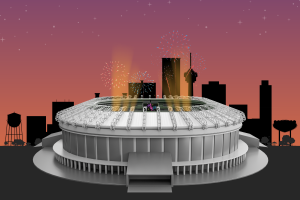At first glance, Venus seems like the very definition of a death world. It might as well be Earth’s evil twin; despite being almost the same size as Earth’s, the Venusian surface is, on average, twice as hot as a kitchen oven, enough to melt lead. The air itself is carbon dioxide and peppered with clouds of sulfuric acid. The life expectancy for human spacecraft that have landed on the surface of Venus can be measured in minutes, if even that. So it might be tempting to write Venus off as a hellscape that is worth fearing but unworthy of any other attention.
But, as usual, the truth is rather more complex.
It is true that Venus’s surface air temperature is a staggering ninety times that of Earth. This is the equivalent of the pressure a full kilometer underwater. Without protection, a human would be crushed instantly. But in the Venusian atmosphere, just as in Earth’s oceans, the pressure loosens as one rises from the depths. Indeed, high above the surface, in the Venusian equivalent of the mesosphere, the otherwise fatally oppressive atmosphere thins to a survivable air pressure. This is why serious suggestions have been made that Venus’s upper atmosphere is suitable for human settlement–where humans would live in floating “cloud cities.”
Even more profound, it has been suggested that Venus could have life of its own, floating amongst the sulfuric acid heights. While it may seem odd that life could exist in an atmosphere filled to the brim with a brew of toxins, those chemicals are only toxins by the standards of recognizable Earth life– and, even on Earth, so-called “extremophile” microorganisms are known to thrive in such places as the farthest depths of the ocean, inside active volcanoes and even outside the atmosphere.
Furthermore, while Venus may also be an inferno today, it is becoming increasingly apparent that this was not always true. The current bone-searing temperature has less to do with Venus’s closer position to the Sun and more to do with the rampant greenhouse effect caused by heat being trapped within the thick carbon dioxide of the planet’s atmosphere– a stark extreme of what may happen on Earth if humans continue to pollute the air.
Before any of this happened, at least hundreds of millions of years ago, Venus may not have been terribly different from Earth. Its atmosphere may have been thinner and far more habitable– and Venus might have even had water, creating the perfect combination for life on what was, truly, Earth’s twin.











